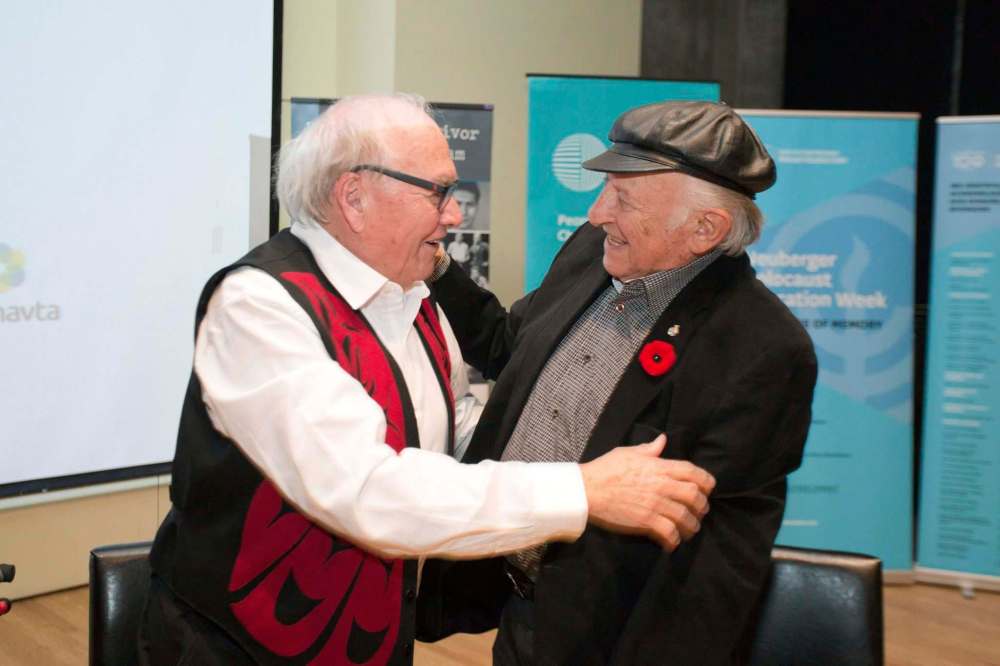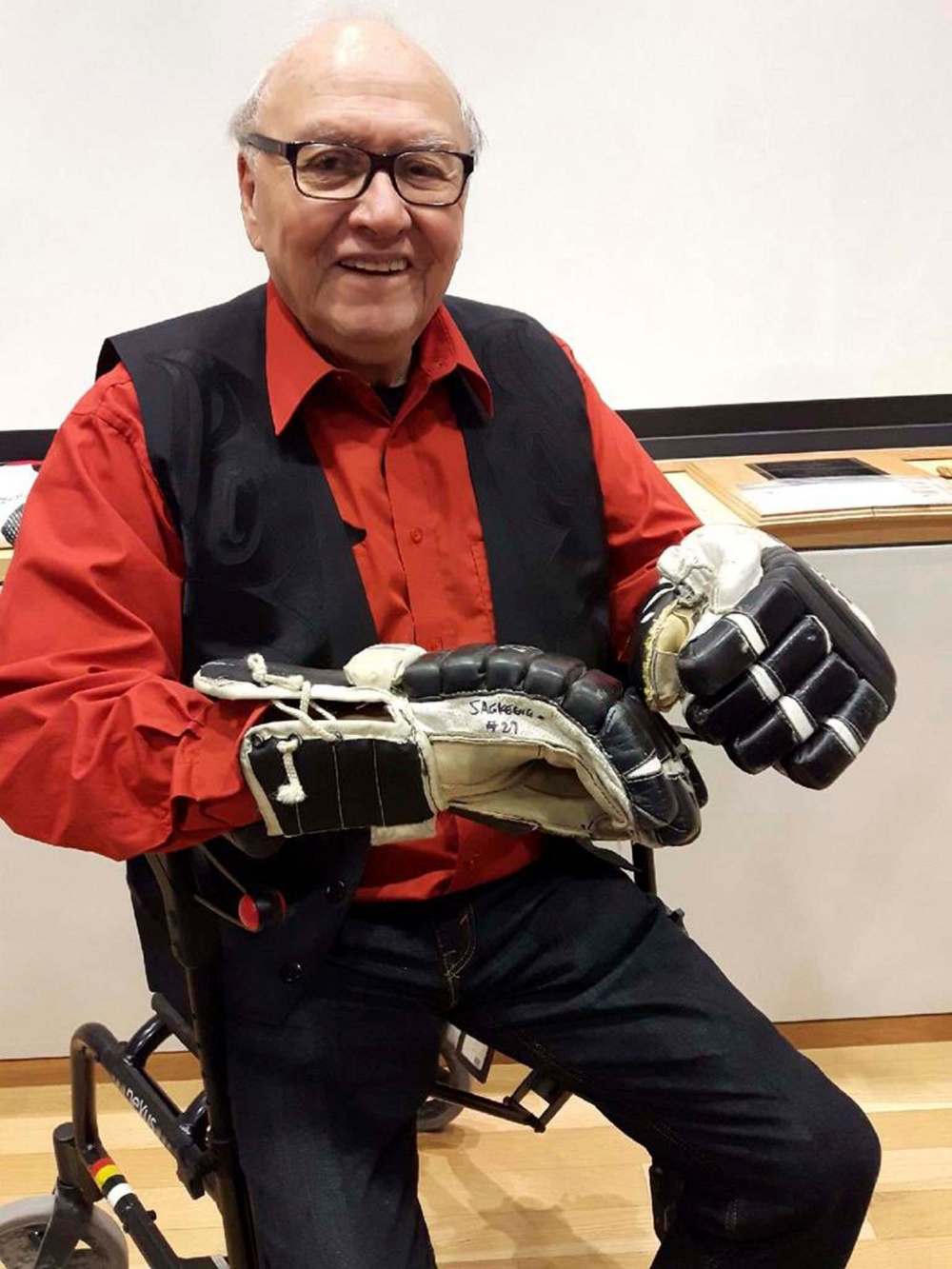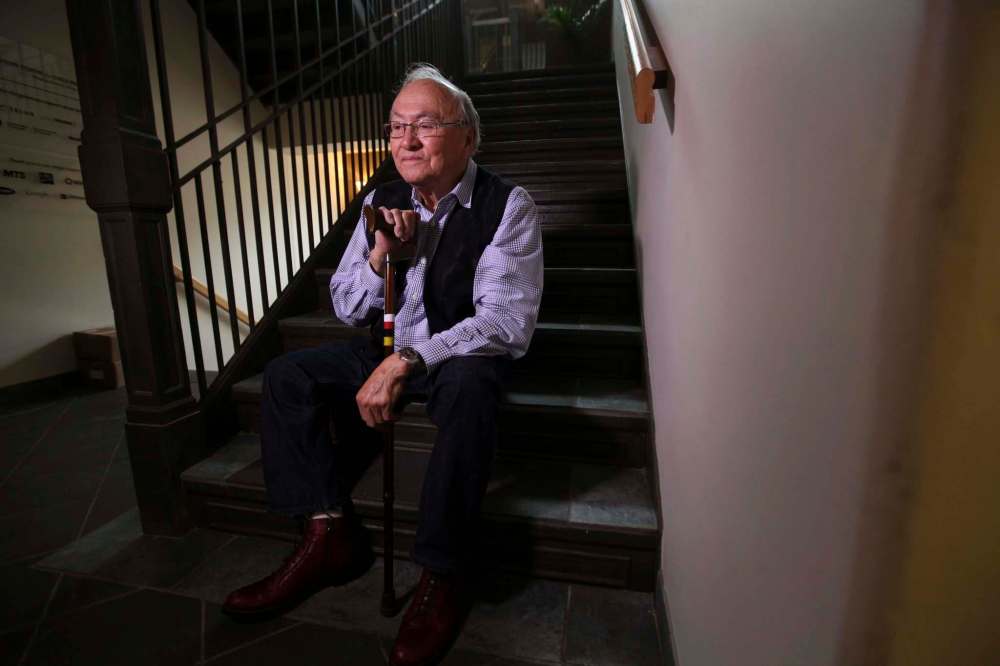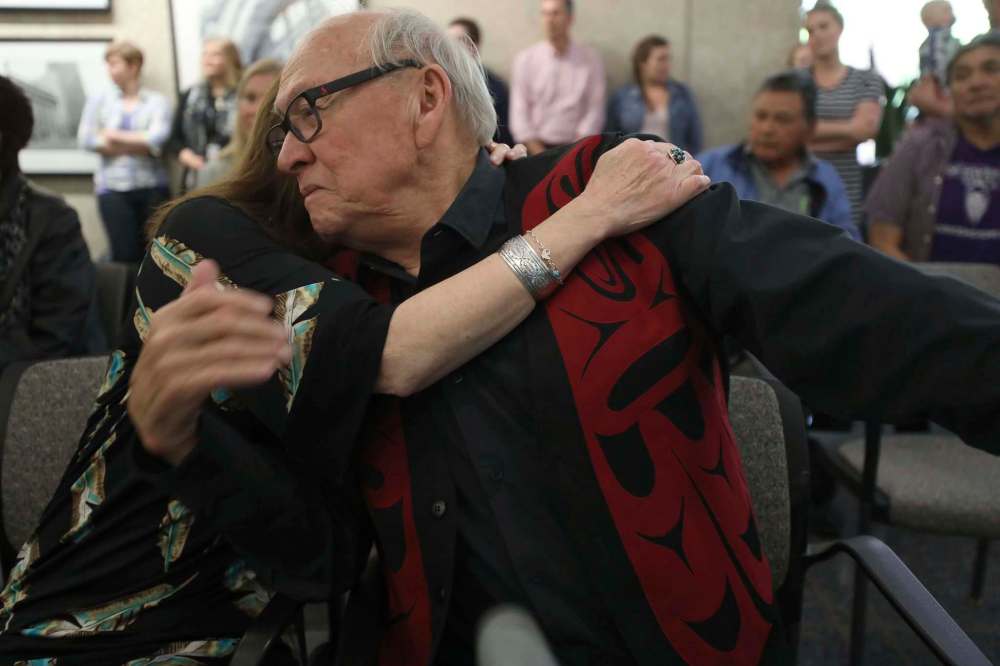Always speaking from the heart
Theodore Fontaine, 79, shined light on dark legacy of residential school system
Advertisement
Read this article for free:
or
Already have an account? Log in here »
To continue reading, please subscribe:
Monthly Digital Subscription
$0 for the first 4 weeks*
- Enjoy unlimited reading on winnipegfreepress.com
- Read the E-Edition, our digital replica newspaper
- Access News Break, our award-winning app
- Play interactive puzzles
*No charge for 4 weeks then price increases to the regular rate of $19.00 plus GST every four weeks. Offer available to new and qualified returning subscribers only. Cancel any time.
Monthly Digital Subscription
$4.75/week*
- Enjoy unlimited reading on winnipegfreepress.com
- Read the E-Edition, our digital replica newspaper
- Access News Break, our award-winning app
- Play interactive puzzles
*Billed as $19 plus GST every four weeks. Cancel any time.
To continue reading, please subscribe:
Add Free Press access to your Brandon Sun subscription for only an additional
$1 for the first 4 weeks*
*Your next subscription payment will increase by $1.00 and you will be charged $16.99 plus GST for four weeks. After four weeks, your payment will increase to $23.99 plus GST every four weeks.
Read unlimited articles for free today:
or
Already have an account? Log in here »
Hey there, time traveller!
This article was published 15/05/2021 (1686 days ago), so information in it may no longer be current.
In 1990, Assembly of Manitoba Chiefs leader Phil Fontaine shocked Canada, by speaking publicly about the physical and sexual abuse he endured during his time in the residential school system.
He talked about how he was not alone (“If there were 20 boys, every single one of them… would have experienced what I experienced”) and how this abuse led to cycles of pain and violence throughout generations of Indigenous families.
For most Canadians, it was the first time they heard the truth about residential schools, opening the way to the creation of the Truth and Reconciliation Commission of Canada.

For survivors, like his cousin, Theodore Fontaine, though, it was something “we all knew, but no one talked about… A simple comment, but it had such a huge hammer.”
Theodore Fontaine died May 10, at 79, after a battle with cancer.
Meeting him, one could be forgiven thinking he was a simple, kind, and gentle man — for he was — but he was also so much more.
“Ted” (as many knew him, but he preferred Theodore) was a survivor, attending Fort Alexander Indian Residential School from 1948-58 and Assiniboia Indian Residential School from 1958-60.
He had similar experiences, calling those years “hell” — a story he tells in his remarkable, bestselling 2010 memoir Broken Circle: the Dark Legacy of Residential Schools.
For many, it was the first time they heard Fontaine’s voice. But before that, he had a full life: an engineer, federal civil servant, and AMC executive director. He was also a skilled hockey player, winning two international tournaments with the Sagkeeng Oldtimers (commemorated in the Hockey Hall of Fame).
Like many survivors, Fontaine experienced decades of personal struggle with relationships, alcohol, and pain, virtually all related to dealing with the trauma of residential schools.
Still, and in spite of it, he maintained his traditional language, Ojibway, and dedicated himself to helping his home community Sagkeeng First Nation at every turn (serving as chief 1979-81).

His “most success” — as Fontaine used to say — was he helped raise a beautiful daughter (Jacqueline) and marrying his remarkable wife Morgan.
It was in his final decade of life though, just after the release of Broken Circle, that cemented his legacy.
Sharing his story of residential schools and how he confronted his own trauma, Fontaine travelled nationally and internationally, demanding Canada grow and change. Over 11 years, virtually all using a four-wheel walker, he spoke at more than 1,500 gatherings.
Most were residential school and TRC events, generously offering his time and support, but he also attended citizenship ceremonies, universities, and virtually anywhere people wanted to hear him speak.
Fontaine never turned down an opportunity to educate children. He also wrote and allowed his work to appear in anthologies, and worked with dozens of researchers and academics documenting residential schools.
His final project was helping to publish a book edited by Andrew Woolford commemorating the history and voices of survivors of Assiniboia school in Winnipeg (Did You See Us?).
Fontaine was an “uncle” to thousands of Indigenous people, sharing encouraging words, phone calls, and even breakfast with toast and jam.
A few months ago, with news he was in the hospital, social media responded with more than 1,000 positive comments and notes of encouragement. He later said that act of community love saved his life.

Courage, kindness, and bravery weren’t just Fontaine’s gifts, it was his path.
He would often call it “niizhota,” being double-hearted. This meant one must not only be loving on the inside, but on the outside, confronting hate and violence when one sees it.
This was a principle he lived each day.
Prime Minister Justin Trudeau once asked him to sign a copy of his book. Fontaine used the opportunity to encourage him to “help Canada understand its Indigenous identity” and “do better than his father Pierre.”
Fontaine was constantly leading with kindness and demanding more of people and organizations, like in his work with the Manitoba Museum, Manitoba Hospice and Palliative Care Association, and international educational organization Facing History and Ourselves.
Some of his most remarkable work came on nationwide tours, speaking alongside Holocaust survivor Nate Leipciger.
Speaking on the similarities between Indigenous and Jewish experiences, Fontaine would show how the policies, processes and the term ‘genocide’ accurately describes residential schools.
At the same time, Fontaine’s public disclosure of his sexual abuse helped Leipciger disclose similar experiences he, too, had with the Nazis in concentration camps.

Leipciger credited Fontaine’s bravery as crucial to his own.
The two men, who described one another as “best friends,” were “absolutely amazing,” University of King’s College Prof. Dorota Glowacka said this week on the phone from Halifax. “Their friendship across time, space, and history — and how two people came together to help each other grow through sharing their pain — is a model to all of us.”
Fontaine was the embodiment of his spirit name, Sabe, the word Ojibway people use for Sasquatch. It refers to the way this beautiful being stands tall and speaks with honesty; words from the heart.
For Theodore Fontaine, it seemed he also spoke from the double-heart, too.
niigaan.sinclair@freepress.mb.ca

Niigaan Sinclair is Anishinaabe and is a columnist at the Winnipeg Free Press.
Our newsroom depends on a growing audience of readers to power our journalism. If you are not a paid reader, please consider becoming a subscriber.
Our newsroom depends on its audience of readers to power our journalism. Thank you for your support.

